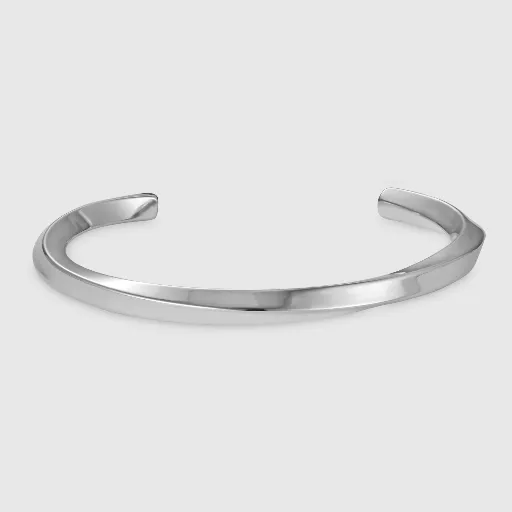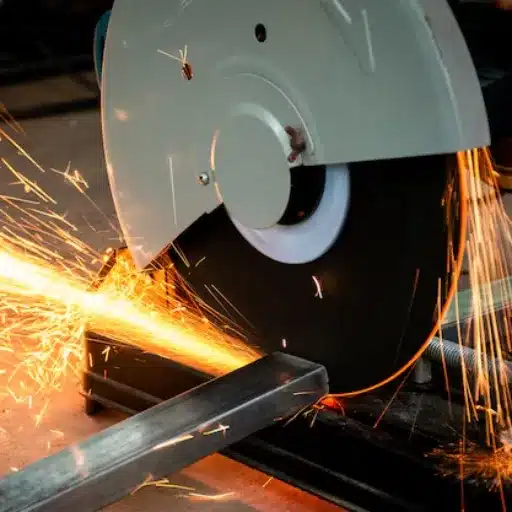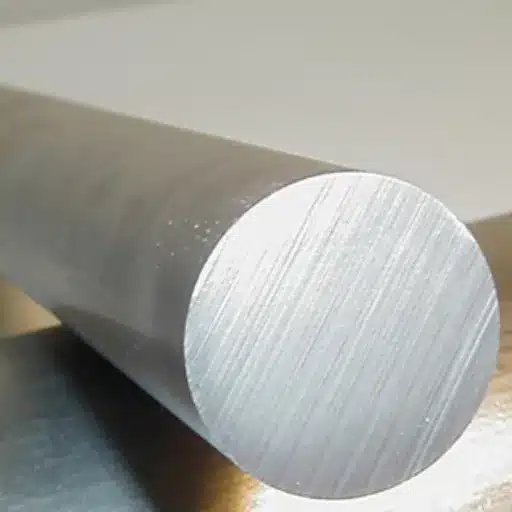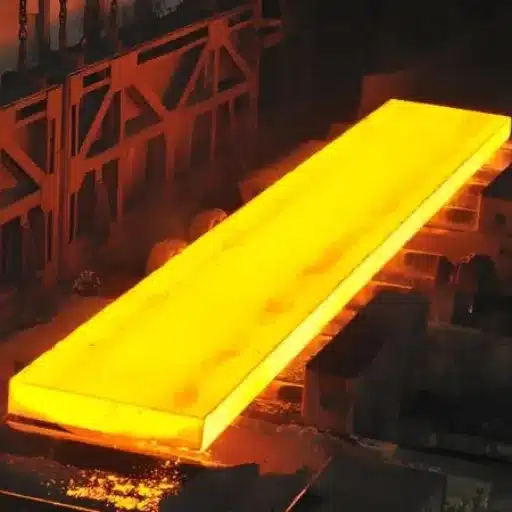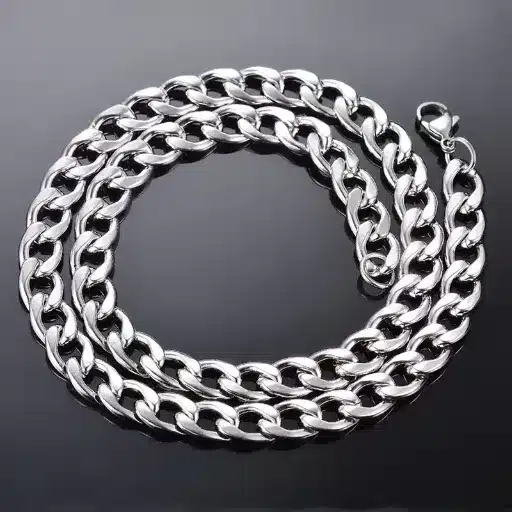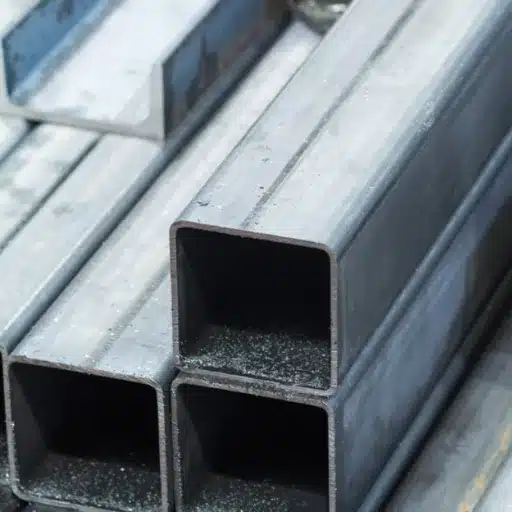In the Manufacturing and Machining sector, the selection of tool steel plays a vital role in ensuring durability, precision, and economy. SKD61, a high-performance alloy steel used for die casting molds and hot working, is one such steel that has stood out for its excellent characteristics. Nevertheless, what if alternative or even SKD61 steel equivalent alloys are used for other specific projects? This article will look into SKD61 steel, its features, and will provide a comparison with other tool steels. By the end, you will be able to gather valuable information on the best materials to use for various tools and molds.
Introduction to SKD61 Steel
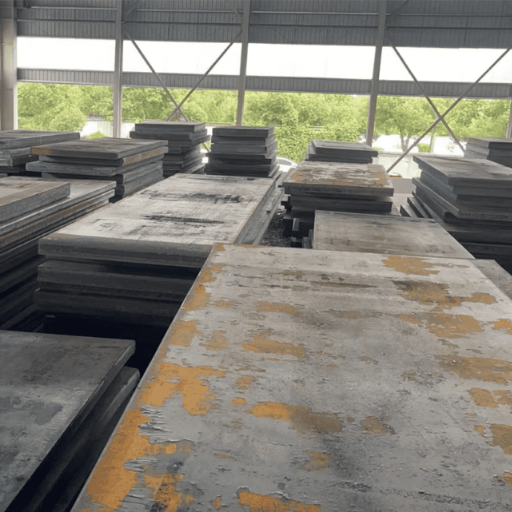
SKD61 steel equivalent grade refers to a commonly used tool steel, known for its resistance to heat, corrosion, and thermal stress. This material is typically included in most die casting tools and dies for punching due to its high-temperature resistance properties. Such property is due to a well-proportioned alloy structure comprising elements such as chrome, molybdenum, and vanadium, which makes the material more resistant to wear, hence making it excellent for heavy industry applications.
What is SKD61 Steel?
The composition of SKD61 steel makes it a good material for making hot work tool steel. It is also known as a good material for making aluminum extrusion dies, aluminum die castings, and other high-temperature application molds due to its high wear resistance, toughness, and durability characteristics.
Applications of SKD61 Tool Steel
SKD61 tool steel is highly advantageous, as it incorporates many favorable features and finds applications in numerous fields. I have enumerated below five major areas where the SKD61 steel equivalent is employed with great advantage:
Die Molds
SKD61 is a standard steel used in die molds for aluminum, zinc, and magnesium alloys. It possesses high resistance to heat and wear, which is critical given the high thermal and mechanical strain that accompanies such processes.
Extruding Mold and Tool
This steel is designed to withstand extreme temperatures and forces during the manufacturing of dies and extrusion tools. It has ample strength for long-lasting tools, assuring sustainability for relevant industrial processes.
Plastic Molding Tool
SKD61 is also used for plastic molding applications, especially in cases of high-temperature plastic molds. In this case, it remains inert for an extended period without distortion; therefore, production and precision processes are maintained.
Forging Dies
The SKD61’s performance makes cracking and deformation at extreme temperatures less likely, which increases its applicability in heavy-duty production where forging dies are required.
Hot Shearing Blades
The hot shearing blades made by SKD61 cut heated metal sheets and profiles, and is often used for this purpose. The wear-resistant and heat-resistant features of this material also assure accuracy and the extended active life of these tools.
Properties of SKD61 Steel
The thermal stability of the SKD61 material is also very high
The high-temperature mechanical properties of SKD61 hardened steel are enhanced, making it suitable for harsh environments such as hot forging and die casting.
Good Ductility
This steel exhibits considerably high fracture toughness, which also makes it tolerant to vigorous cyclic mechanical loads without instant fracturing of the steel during such procedures.
Articulating Friction Volumes and Sliding Friction Surfaces’ Explainative Review
This cold work steel also has an excellent ability to resist abrasive wear, which means longer service potential of tools, or that the tools can work under high stresses.
Machinability
However, the usefulness of casting is restricted by the low machinability of the alloy SKD61.
Higher Hardness
It is evident that further heat treatment can increase the hardness of SKD61 steel, which is beneficial in mitigating impact wear and abrasion in such demanding operations.
Equivalent Materials for SKD61
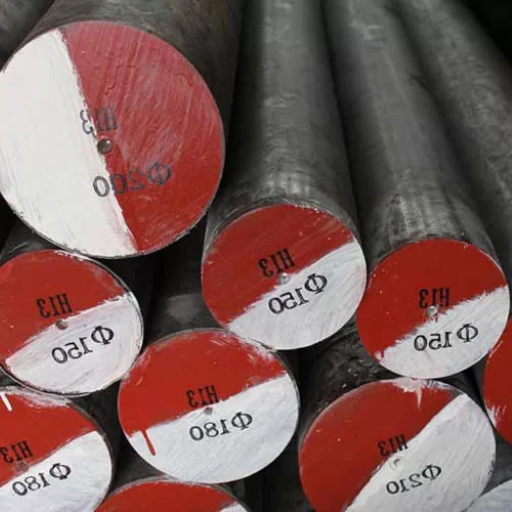
The following alternatives are most frequently considered as SKD61 steel equivalent:
- H13 (from USA AISI/ASTM Standard)
- DIN 1.2344 (German DIN Standard)
- X40CrMoV5-1 (EN Standard in Europe)
This is due to their similarities in chemical composition and physical characteristics, and can therefore be used as replacements in tasks that utilize any of the materials listed above.
Overview of Steel Equivalents
Steel equivalents are very useful when the original grades are not specified or need replacement due to the location or supply restrictions. Following is a step-by-step description of the equivalents of SKD61 and structural comparison:
1. SKD61 vs H13 Equivalent (Alternative) in USA AISI/ASTM standard
H13 Tool Steel, sometimes referred to as the international equivalent of SKD61, is the most conventional grade in die casting and hot working applications.
Structure (Chemical) Comparison:
- SKD61 is used because Cr, Mo, and V are added to the tool steel composition, all of which increase the hardness of the part and enhance its wear resistance.
- H13 consists of nearly the same elements as it typically consists of 4.75-5.5%Cr, 1.15- 1.75% Mo, and 0.8-1.2% of V.
Uses as:
Used for hot forged dies, die casting dies, and all extrusion tools for their thermal stability and toughness properties.
2. SKD61 steel equivalent Germany Standard DIN 1.2344
The European equivalent for SKD61 can also refer to DIN 1.2344, which is commonly used by European factories.
Mechanical Characteristics:
- The hardness is 48-52 HRC after the heat treatment is applied.
- Due to the multiple thermal cycles employed in the production of materials from refractory alloys, their heat resistance is also high, while their impact strength & thermal fatigue are relatively low – this allows them to operate under high-temperature and pressure conditions during die castings.
Features:
These alloys are highly Mo & V-containing, which means they do not suffer from thermal cracking or high-temperature induced creep.
3. AK Steel SKD61 and X40CRMOV5-1 Differences (The European EN standard)
X40CrMoV5-1 tool steel is among the SKD61 steel equivalent materials that serve industries that need h (high pressure) & t (heat) endurance materials.
Desirable Attributes:
- The ability to withstand high temperatures for an extended period increases its lifespan in such harsh operating conditions.
- Very Good machinability in the annealed condition.
Uses:
This die steel is widely used in the manufacture of not only extrusion tools but also plastic molding injection dies and press dies.
Comparative Data Table
| Property | SKD61 | H13 (AISI/ASTM) | DIN 1.2344 | X40CrMoV5-1 |
|---|---|---|---|---|
| Hardness (HRC) | 48-52 (after HT) | 48-52 (after HT) | 48-52 (after HT) | 48-52 (after HT) |
| Thermal Stability | High | High | High | High |
| Toughness | Excellent | Excellent | Excellent | Excellent |
| Chemical Composition | Similar | Similar | Similar | Similar |
| Applications | Die-casting, hot-working | Die-casting, hot-working | Die-casting, extrusion | Die-casting, molding |
Final Thoughts
Comprehension of these replacements facilitates the selection of appropriate materials for crucial purposes, as well as in every region, whether by name or specification. Producers and Designers must encourage or create relationships with Steel Makers and refer to the Standards, with the aim of cross-checking, especially if functionality and durability of a product are essential.
1.2344 Steel as an Equivalent
In engineering, SKD61 steel is equivalent to H13 tool steel, which is a type of hot-work tool steel categorized under the AISI category as H13. It is a highly versatile metal that can be used for many purposes. Such work would be highly impossible in the absence of any kind of substitute for this steel, which has a higher hardness and temperature tolerance. Therefore, a few subdivisions in the core forming process arc exist, such as die casting, extrusion, and injection molding of plastics, which are common applications of this material. The following is some general information and properties of 1.2344 steel.
Chemical Composition
The following table illustrates the chemical composition of 1.2344 steel:
| Element | Percentage (%) |
|---|---|
| Carbon (C) | 0.32 – 0.45 |
| Chromium (Cr) | 4.75 – 5.50 |
| Molybdenum (Mo) | 1.10 – 1.75 |
| Vanadium (V) | 0.80 – 1.20 |
| Silicon (Si) | 0.80 – 1.20 |
| Manganese (Mn) | 0.20 – 0.50 |
| Phosphorus (P) | ≤ 0.030 |
| Sulfur (S) | ≤ 0.030 |
This balanced formulation imparts superb hardness, heat resistance, and durability to the steel in stressed conditions.
Physical Properties
- Hardness: 44 – 52 HRC after quenching and tempering.
- Breaking Strength: 1,450 MPa
- Strain: ~10%,
- Heat Resistance: Without deformation or loss of function up to 600°C.
Such characteristics enable them to be used for tools that experience high impacts and switching from very low to very high temperatures.
1.2344 Skd61 Steel Applications
- Molds used in the die casting of aluminum, magnesium, or zinc alloys.
- Plastic and metallic extrusion dies.
- Inserts and tools used in hot forging.
- Wear-resistant plastic molds.
- Hot working shear knives and cutters.
Steel Properties Enhancement
It uses heat treatment to enhance the properties of the steel.
- Annealing: the working temperature is 850 – 900°C, and then set to the furnace at 10°C/hr until 600°C.
- Hardening: The sample is heated to a temperature of 1000 – 1050°C and then cooled rapidly in oil or air.
- Tempering: Temper at 550 – 650°C to marinate.
Other Similar Standards and Equivalent Grades
The steel code 1.2344 can also be referred to by other grade names as per international standards, such as:
- AISI, H13
- JIS, SKD-61
- GB/T, 4Cr5MoSiV1
This makes it easier to locate and use 1.2344 steel for various projects worldwide without compromising quality and productivity.
Concluding Remarks
Use only experienced suppliers who will provide high-quality steel, as poor quality would increase scrap rates or production costs. Also, there is need for adherence to all machining, heat treatment, and maintenance procedures so as to extend the usefulness of this material for strenuous conditions structural work.
Comparison with H13 Tool Steel
| Parameter | SKD61 | H13 |
|---|---|---|
| Standard | JIS G4404 (Japan) | ASTM A681 (USA) |
| Primary Use | Hot work dies, molds | Hot work dies, molds |
| Chemical Composition | Similar, minor variations in elements | Similar, minor variations in elements |
| Hardness (Annealed) | ≤229 HBW | ≤235 HBW |
| Quenching Temp. | 990-1040°C | 1000-1050°C |
| Tempering Temp. | 590°C | 550°C |
| Wear Resistance | High | High |
| Thermal Stability | Excellent | Excellent |
| Corrosion Resistance | Moderate | Fair |
| Machinability | Moderate | Good |
| Weldability | Moderate | Good |
| Applications | Die casting, forging dies | Die casting, forging dies |
| Cost | Moderate | Moderate |
Chemical Composition and Mechanical Properties
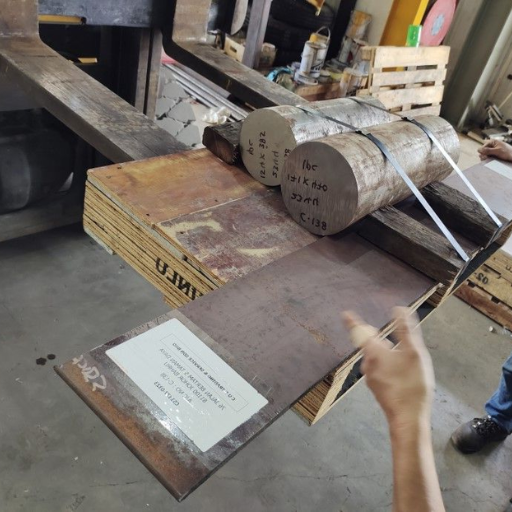
The physical properties exhibited by 1.2344 steel are quite similar to those of H13 steel. Major constituents include chromium at a range of 4.75% to 5.50%, molybdenum at 1.10% to 1.75%, and vanadium at 0.80% to 1.20%, with carbon at 0.35% to 0.45%. These metals lend strength, abrasive wear resistance, and ductility, respectively.
In terms of its mechanical properties, 1.2344 steel exhibits a desirable combination of thermal stability and hardness, with heat-treated steel achieving an average hardness of 50-54 HRC. It also withstands mild surface decarburization at high temperatures. For this reason, it can be used in processes such as die casting and hot forging.
These properties make them equally efficient, with tensile and thermal load-bearing steel, even if there are slight changes in the alloy composition to suit particular applications.
The SKD61 steel equivalent, 1.2344, and H13 differ slightly in their alloy percentages.
Chemical Composition of SKD61
SKD61 steel is a hot work tool steel that should be preferred for superior toughness and machinability, along with excellent heat-resistant properties and potential to be tempered to a very high degree of hardness. Its chemistry is adjusted in such a manner to meet these requirements. Let us now discuss the chemical composition of SKD61 steel equivalent.
| Element | Composition (%) | Description |
|---|---|---|
| Carbon (C) | 0.32 – 0.42 | Enhances hardness, wear resistance, and tensile strength. |
| Silicon (Si) | 0.80 – 1.20 | Improves toughness, heat resistance, and oxidation resistance. |
| Manganese (Mn) | 0.20 – 0.50 | Helps improve hardenability and wear resistance. |
| Chromium (Cr) | 4.50 – 5.50 | Provides corrosion resistance, toughness, and wear resistance. |
| Molybdenum (Mo) | 1.10 – 1.60 | Enhances high-temperature strength and hardness. |
| Vanadium (V) | 0.80 – 1.20 | Improves wear resistance and grain refinement. |
| Phosphorus (P) | ≤ 0.030 | Impurities are kept to a low level to prevent any adverse effects on steel quality. |
| Sulfur (S) | ≤ 0.030 | Impurities are minimized to maintain toughness. |
Equilibrium in the chemical composition of SKD61 is one of the factors that enable excellent performance in high-temperature and high-pressure applications. This alloy, due to its high wear resistance and resistance to repeated exposure to heat, is commonly used in extrusion dies, die-casting molds, and hot forging dies.
Mechanical Properties of H13 and 1.2344
| Property | H13 | 1.2344 |
|---|---|---|
| Tensile Strength (MPa) | 1200-1590 | 1200-1400 |
| Yield Strength (MPa) | 1000-1380 | 1050-1200 |
| Hardness (Annealed) | ≤229 HBW | ≤229 HBW |
| Hardness (Tempered) | 50-55 HRC | 48-56 HRC |
| Modulus of Elasticity | 215 GPa | 210 GPa |
| Thermal Conductivity | 28.6 W/m·K | 38 W/m·K |
| Thermal Expansion | 10.4 × 10⁻⁶/°C | 12.7 × 10⁻⁶/°C |
| Impact Toughness | High | High |
| Wear Resistance | Excellent | Excellent |
| Applications | Hot work dies, molds | Hot work dies, molds |
Heat Treatment for Optimal Performance
Appropriate application of prescribed heat treatment is critical if the objective is to achieve the best performance of SKD61 (H13/1.2344). With the right kind of heat treatment, it is possible to enhance the hardness, toughness, and wear resistance of the tool steel, allowing it to be effectively utilized in highly demanding environments. The following are five major heat treatment procedures described in detail:
Annealing
- Heat up to 850-900°C (1562-1652°F) and maintain for one or two hours.
- Slowly, by 10-20°C (50-68°F) per hour, the furnace cools itself down to 600°C (1112°F), and then this process is repeated in air.
- This helps soften the steel, makes it easier to deform, and eliminates internal tension of the material.
Stress Relieving
- Heat up to 600-650°C (1112-1202°F) for iron and maintain this temperature for about one to two hours.
- Allow the steel to cool down in the air.
- Used to minimize the residual stress induced by machining or previous treatment, without affecting the dimensions of the component.
Hardening
- Preheat to 500-600°C (932–1112°F), then increase the temperature to 1000–1050°C (1832–1922°F) and soak for a short time.
- Oil, air, or an inert gas may be used for quenching depending on the tool’s design and performance level.
- This process contributes to the improvement of both hardness and strength.
Tempering
- It is necessary to immediately temper to the required hardness of 500-650°C (932-1202°F) after hardening.
- Temperature stability for 2 hours for every 25mm (1 inch) of thickness after cooling to room temperature.
- Tempering the strain whereby the material does not lose its hardness.
Through nitriding
- The temperature is 500-550°C (932-1022°F) under atmospheric conditions with nitrogen.
- And for different times, depending on the depth that is required to be reached by the nitrided layer.
- This method enhances surface hardness and wear resistance, while maintaining unchanged core toughness.
Applications of Equivalent Steels
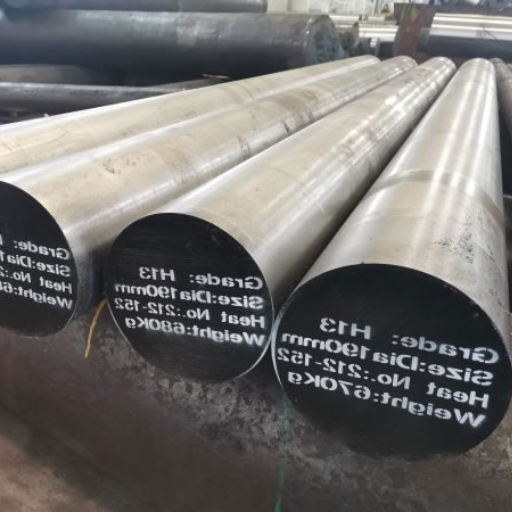
There are many industries where the application of equivalent steels is essential due to the high requirements for strength and hardness, as well as reliability. It is widely used for various functions such as:
- In the automobile industry, when it comes to gears, shafts, and other elements with high tribological properties.
- In aviation, when constructing very loaded and thermally insulated elements such as landing legs and other structural long armatures.
- In the tool engineering and cutting equipment-working industries, these are used for producing cut-out knives, punches, and product shaping matrices.
Most mechanical properties analysis equivalent steels allow for their application in critical applications. Here are a few examples of specific objects that happen to include equivalent steels.
Use in Hot Work Tool Applications
Intense operational environments involving heat, abrasion, or deformation require tools made from equivalent steels, as they’re highly resistant to these parameters. This makes them suitable for tools that are particularly suited to extreme thermal and mechanical operating conditions. Five prominent examples are:
Die Casting Molds
- They are used to make die-castings more than once without the mold breaking down from repeated molten metal exposure.
- They are capable of withstanding temperatures of over 600°C and still retaining their original size.
Forging Dies
- When conducting high-temperature metal forming processes, such as forging metals, they are a necessity.
- For use in dynamic situations, it contains very high levels of toughness and exhibits a good level of wear resistance.
Extrusion Dies
- Used during extrusion processes of soft metals such as Aluminum, Magnesium, and Copper.
- The worn-out areas are features that comprise the resistance to prolonged chemical cyclic conditions.
Hot Shear Blades
- These are cast steel blanks specially shaped for cutting hot-rolled plates and bars.
- Resistant to rapid temperature changes as well as to frequent high–stress loading.
Plastic Injection Molds: High Heat
- Plastic molding favors a higher temperature of the process.
- Possesses high thermal conductivity to aid cooling.
In hot work, various substitutes are essential to ensure the durability and longevity of the tool in question, and this classification correctly explains these tendencies.
Die and Mold Steel Applications
Forging Dies
- Intended for use in metal forming applications under high pressure and high deformation.
- Good toughness and wear-resistance are necessary for long-term working of the tools.
- H13 can be obtained from the above alloys, and this type of steel can also be used, especially in SKD61 steel equivalent for hot work (rectangular, or flat) dies.
- Frequently applied in the fields of automotive and aerospace engineering.
Plastic Injection Molds
- Untented and most yet enabled design for easy, high-precision and complicated shapes.
- Only enhanced cooling by improving aluminium conductivity and reducing process time is targeted.
- Materials such as P20 hydrogen-resistant steel and H11 are widely known and used.
Die-Casting Dies
- Aims to endure thermal stress from high-temperature molten metal components.
- Essentially used for production are structural elements of Ni-type aluminum, magnesium, and zinc bodies.
- It exhibits high thermal stability and temperature-dependent heat-checking behavior, enabling it to maintain performance over an extended period.
Extrusion Dies
- Configuration is crafted in such a way that it facilitates the extrusion process of metals, shapes, and forms.
- This attribute helps in maintaining sharp dimensional profiles.
- Primarily used for aluminum sections and tubes in the building and automotive sectors.
Punching Dies
- They are designed to withstand any form of power that may be applied during the cutting or punching of sheet metals.
- Tool steel samples, such as D2 and DC53, are designed to be wear-resistant and tough, hence they are popular.
- Extensively used across sectors, particularly consumer electronics, white goods, and automotive.
All of these applications demonstrate the significance of die and mould steels in the modern world. The very ability to withstand these conditions ensures the quality and performance of the products derived.
Industry-specific Applications
Die and mold steels are utilized in various industries for different purposes due to their characteristics, such as hardness, wear resistance, and strength. At the bottom, a list of specific applications relevant to various industries is provided.
Automotive Sector
- Used in making essential parts such as engine blocks, transmission cases, or body panels.
- Steels with high hardness and strength offer durability and precision even in the most stressful situations.
- Example Data: The worldwide consumption of automotive die steels is estimated to increase 5.2% annually between 2021 and 2028.
Electronics and Semiconductor Sectors
- These materials are essential in the development of skin packs and moulds in the manufacture of PCBs and microparts.
- Materials such as DC 53 in engineering remove errors and wear and tear in detailed curing.
- Example Data: In the case of semiconductor components, about 70 percent require die materials to maintain moulding standards.
Aviation Sectors
- Applied to manufacture parts through the cold or intermediate die forging processes (no hot forging), such details as helicopter turbine blades, structural frameworks, main fastenings, among others.
- When a metal is utilized in the forge industries, W steels possessing excellent properties, such as resistance to heat, are irreplaceable.
- Example Data: The use of die steels in the aerospace industry’s tooling is estimated at approximately 15% of the total global demand for die steels.
Structural Sector
- Employed in the manufacture of heavy cranes, presses, mixers, and other large and heavy construction machinery and equipment, as well as molds for laying bricks.
- The high impact resistance of die steels translates into longer life spans for construction components during environmental disturbances.
- Example Data: Approximately 10% of die steel demand globally is attributed to the need for mold steels used in construction.
Consumer Goods and Household Appliances
- Used for the manufacture of items such as storage boxes, home appliances, and furniture parts.
- Specialized mold steels have the advantage of a good surface finish
- Example Data: More than 40% of the world’s plastic injection blow-molded applications use die mold steels for manufacturing purposes.
Such applications demonstrate the extensive range of industries that employ die and mold steels in their processes for precision, high quality, and durability, highlighting their importance.
Comparison of SKD61 with Other Tool Steels
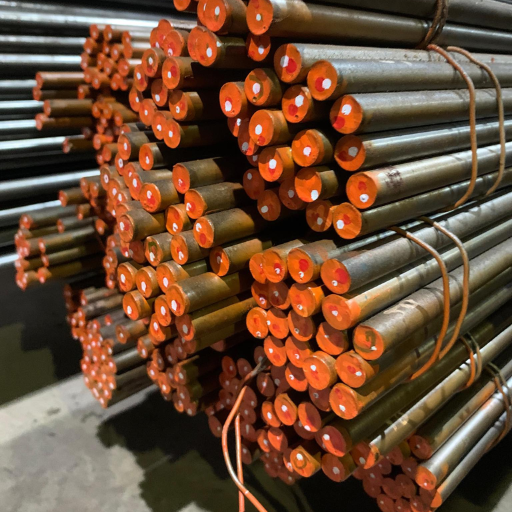
| Parameter | SKD61 | H13 | 1.2344 | D2 |
|---|---|---|---|---|
| Standard | JIS G4404 (Japan) | ASTM A681 (USA) | DIN 1.2344 (Germany) | ASTM A681 (USA) |
| Primary Use | Hot work dies, molds | Hot work dies, molds | Hot work dies, molds | Cold work tools |
| Hardness (Annealed) | ≤229 HBW | ≤235 HBW | ≤229 HBW | ≤255 HBW |
| Hardness (Tempered) | 50-55 HRC | 50-55 HRC | 48-56 HRC | 58-62 HRC |
| Wear Resistance | High | High | High | Very High |
| Thermal Stability | Excellent | Excellent | Excellent | Moderate |
| Corrosion Resistance | Moderate | Fair | Fair | Poor |
| Machinability | Moderate | Good | Moderate | Poor |
| Applications | Die casting, extrusion dies | Die casting, extrusion dies | Die casting, extrusion dies | Punches, dies, cutting tools |
Steel Round and Plate Comparisons
| Parameter | Steel Round | Steel Plate |
|---|---|---|
| Shape | Cylindrical | Flat rectangular |
| Grain Structure | Uniform along length | Directional, varies by cut |
| Thickness Range | Varies, typically smaller | 6mm and above |
| Applications | Shafts, rods, machine parts | Structural, machinery, bridges |
| Machinability | Easier for cylindrical parts | More waste for non-flat parts |
| Strength | High tensile in longitudinal direction | Varies by grain orientation |
| Cost Efficiency | Less waste for round parts | Economical for flat components |
| Heat Treatment Impact | Retains grain direction post-treatment | Grain anisotropy remains post-treatment |
| Common Uses | Gears, axles, fasteners | Reinforcements, heavy machinery |
DIN and JIS Standards for Tool Steels
The data and information below communicate examples of five frequent tool steels available in the marketplace as per the given DIN and JIS classifications:
DIN 1.2344 / JIS SKD61
- The SKD61 steel equivalent belongs to a hot work steel tool
- Hardness of the said steel in HRC (50-55)
- Property Advantages: High wear resistance, ease of temperature retention and intensive use without oxidizing in working conditions.
- Usage: Producing die casts, casting, and molds.
DIN 1.2379 / JIS SKD11
- Steel Grade: Cold Work High Carbon High Chromium Tool Steel
- Expected hardness (HRC) – 58-62
- Properties: Low distortion and wear resistance after quenching, goal thermal stability and short-term service for corrosion.
- Use: Piercing, stamping and slitting dies.
DIN 1.2080 / JIS SKS3
- Category: Cold-work non-deforming steel-alloyed tool steel
- HRC value ranges from 58 to 62
- Unique Properties: The resistance to wear is good, the temperature stability is average, and the corrosion resistance is very weak.
- Examples of Use: Hand tools, for cutting or shearing, and dies for stamping.
DIN 1.2510 / JIS SKS93
- Category: Oil-hardening special steels
- Hardness levels in HRC of 58-60
- Key Characteristics: Machinability, resistance to wear, and hardness, all of which are good, however not too exceptional.
- Applications: Tools for cutting, gauges, small dies, etc.
DIN 1.2767 / JIS SKT4
- Material Type: Tool Steel Of High Toughness Category
- Hardness Range (HRC): Before hardening occurs, 45-50
- Key Characteristics: Toughness is high, resistance to wear is moderate, while machinability is relatively good.
- Applications: Dies for heavy-duty work, molds for plastics, and tools for engineering.
Such standards facilitate the quality and performance of tool steel, helping to cater to different industries as their requirements arise.
ASTM Standards and Their Relevance
The reliability and quality of products and materials are significantly enhanced by ASTM standards, which serve as the global benchmark in many cases. I consider these standards to be crucial because they embody the structural references for such material properties and performance assessment techniques. For instance, in tool steels and other industrial applications, the ASTM standards help maintain the required levels of performance by providing guidelines that promote the prolongation of desired functionality and proficiency without any breakages.
References
- Purdue University – Material Overview
- ISO Grade Reference Document – This document provides detailed information on tool steel grades, including SKD61 and its equivalents.
- University of Kentucky – Graduate School Theses – Optimization of Cutting Conditions for Sustainable Machining. This research includes experimental work on machining steel, with specific reference to SKD61.
- CiteSeerX – Design of Rib Plate of Electrode – Electrochemical Machining Study
Frequently Asked Questions (FAQ)
SKD61 steel is comparable to H13 or 1.2344 grades of tool steels. As both steels contain similar constituent alloying elements and possess similar physical and exploitation characteristics, they are employed under closely matching conditions, where there is a demand for superior heat and impact resistance.
Also referred to as SKD61, H13 steel exhibits both high hardness and excellent wear resistance, as well as reasonably good toughness, particularly when exposed to high temperatures. The material is used for hot working tools, and thanks to the vanadium, the required hardenability for tool making is achieved. The chemical composition of AISI H13 contains specific proportions of chromium and molybdenum, which provide good thermal fatigue resistance.
Consider SKD61 hotwork tool steels are used in various situations, including die casting, forging, and extrusion. These tool steels are designed to work at high temperatures where the tools experience high thermal loads, hence are suitable for making parts that are subject to high wear and under very high temperatures.
The hardness of SKD61 steel typically costs thirty to thirty-two Rockwell C after it has been heat-treated. On the other hand, the other equivalents, such as AISI H13 and DIN 1.2344, also have the same hardness range, which is most lethal to most working conditions.
The primary objective of heat treatment for SKD61 and its equivalents is to enhance the physical properties of the material, including its hardness and toughness. The heat treatment processes can range from quenching, backing with a catalyst, and hardening and annealing with the desired properties on these steels to be achieved for an extended service life in hot work tools.
The 1.2344 grade tool steel can be essentially described through its high strength, abrasion resistance, and reasonable toughness at high temperatures. It possesses characteristics that enable the production of skd61 and other tools that necessarily require significant thermal and mechanical loads.
When compared to the original carbon steel, SKD61 is significantly more complex in nature and exhibits better resistance to wear and fracture, even in high-temperature applications. Carbon steels are designed for general purposes, whereas SKD61 is developed explicitly for high-performance applications. These factors make SKD61 a good option amongst special steels.
The introduction of these additional elements, such as chromium and molybdenum, enhances the properties of alloy tool steels, including SKD61. Such features include increased hardness, enhanced wear resistance, and improved toughness, which are necessary for tools that operate at high temperatures.

